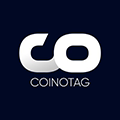Shiba Inu’s Shibarium Sees 84% Drop in Transaction Fees, Boosting Network Usability
1
0

- Recent data showcases significant changes in Shibarium’s performance metrics.
- The declining transaction fees and gas prices on Shibarium have notable implications.
- These reductions could potentially enhance network accessibility and efficiency.
Discover how recent drops in Shibarium’s transaction fees and gas prices could reshape the Shiba Inu ecosystem, making it more accessible for users and developers alike.
Shocking Decline in Shibarium’s Transaction Fees
Data from Shibariumscan indicates a stark 84% reduction in Shibarium’s transaction fees over a span of just a few days. Specifically, fees plummeted from 79 BONE on June 22 to a mere 12 BONE by June 27. This sharp decline is particularly significant as BONE is the designated gas token within the Shibarium ecosystem, crucial for transaction processing and staking.
Massive Drop in Gas Prices
Alongside the drop in transaction fees, Shibarium’s average gas prices have also seen a dramatic decrease. From 40.83 gwei on June 24, the average gas price dropped to 8.39 gwei by June 27, representing a 79% reduction. Gas prices are a key factor in determining the cost-effectiveness of operations on a blockchain network, and this decline is likely to make Shibarium more attractive for a broader range of users.
Benefits for the Shibarium Network and Its Users
The substantial decreases in both transaction fees and gas prices serve as a boon for Shibarium. These lower costs ease transaction execution, thereby making the network more affordable and accessible. Especially, decentralized applications (dApps) and other services operating on the blockchain will find these cost reductions critical for maintaining operational efficiency.
Competitive Edge in the Blockchain Space
By offering significantly reduced transaction fees and gas prices, Shibarium positions itself as a competitive player within the blockchain landscape. Users and businesses can now execute transactions more cost-effectively compared to many competing networks. This economic advantage is expected to encourage both individual users and institutional adoption of Shibarium for their transactional and operational needs.
Conclusion
In summary, Shibarium has undergone noticeable declines in both transaction fees and gas prices, an evolution that could widen its user base and strengthen its competitive stance in the blockchain world. With over 417 million transactions processed, and a robust infrastructure supporting millions of blocks and wallets, Shibarium is poised for an era of enhanced usability and strategic advantage.
1
0









